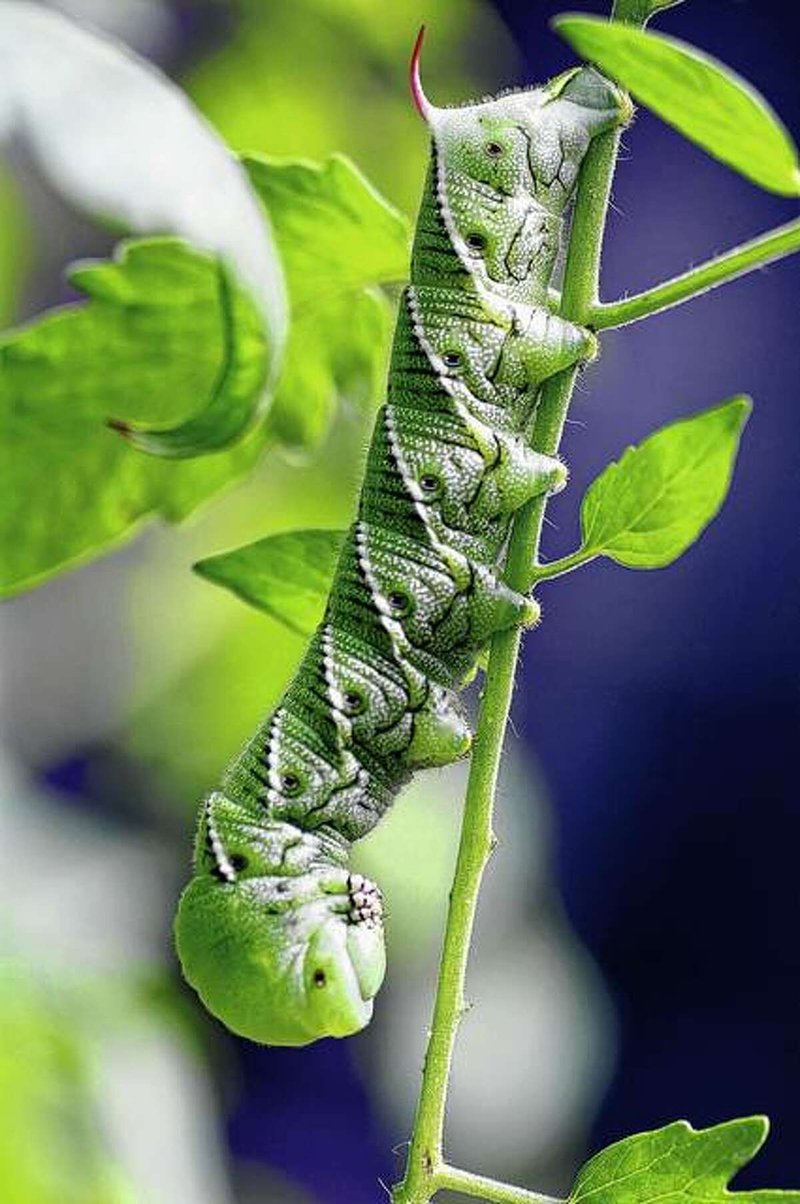
Hornworms are the larvae of certain species of moths, particularly the *Manduca sexta* (the tobacco hornworm) and *Manduca quinquemaculata* (the tomato hornworm). They can grow to be about 4 inches long and have a distinct horn-like protrusion on their rear end, giving them their name. These little pests are notorious for their voracious appetites, making them a gardener’s nightmare during the growing season. Now, let’s break down everything you need to know about hornworms in a way that even a beginner can grasp.
What Do Hornworms Look Like?
At first glance, hornworms can be a bit tricky to spot because of their excellent camouflage. These worms are typically a bright green color, which helps them blend in with the leaves of the plants they feast on. Their bodies are often covered in small, fine hairs, giving them a somewhat fuzzy appearance.
One of the most identifiable features of hornworms is the horn-like appendage located at the rear of their bodies. It’s not just for show; this horn can serve as a deterrent for some predators. Depending on the species, hornworms might also have white stripes running along their sides, making them even more unique.
You might be wondering, “Why should I care about these little guys?” Well, they may look harmless, but they can strip a plant bare in no time. A single hornworm can consume an entire tomato leaf in just one day! Keeping your eyes peeled for their telltale signs can save you a lot of heartache down the line.
Life Cycle of a Hornworm
Understanding the life cycle of hornworms can help you tackle these pests effectively. Their journey begins as eggs laid by adult moths on the underside of leaves. Once the eggs hatch, tiny hornworms emerge and start feeding almost immediately. The larvae grow rapidly, molting several times until they reach their full size.
Once they’ve devoured enough plant material, the hornworms will drop to the ground and pupate in the soil. This means they’ll transform into moths in a cocoon-like state. After about 10 days, the adult moths emerge, ready to lay more eggs and continue the cycle.
Knowing this cycle is crucial for gardeners. If you manage to catch them in the larval stage, you can significantly reduce their numbers before they become a bigger problem. Keep an eye out in late spring through summer when these pests are most active!
Common Plants Hornworms Affect
Hornworms primarily target plants in the nightshade family, which includes some of our favorite garden staples. Here are a few plants you should watch closely:
- Tomatoes: These are a hornworm’s favorite buffet option. A few hornworms can quickly devastate a tomato plant.
- Peppers: Like tomatoes, peppers are also popular targets for these hungry worms.
- Eggplants: These plants can suffer just as much from hornworm infestations as their nightshade cousins.
- Tobacco: As the name suggests, tobacco hornworms love this plant.
If you’re growing any of these in your garden, it’s wise to be vigilant. Regularly inspect your plants for the characteristic signs of hornworm munching, which include missing leaves and droppings on the ground.
How to Identify Hornworm Damage
You might be wondering what hornworm damage looks like. It’s not exactly subtle. When these critters are at work, you’ll notice a few things. First, look for large, gaping holes in the leaves, which can make a plant look like it’s been through a battle. Sometimes, they’ll leave behind frass—essentially, insect poop—on the leaves or soil beneath them.
Additionally, you might find them hanging out on the undersides of leaves. While they are feeding, they tend to stay hidden, so you may need to flip a few leaves over to check.
Here’s the thing: spotting these signs early can make a huge difference in your garden’s health. If you notice significant damage, it’s time to take action before they wreak more havoc.
How to Control Hornworms in Your Garden
Effective hornworm control requires a mix of vigilance and strategic action. Here are some methods you can use to keep these pests in check:
- Hand-picking: This is the most straightforward method. If you see a hornworm, just pluck it off your plant and dispose of it. This can be surprisingly satisfying!
- Natural predators: Encourage birds and other beneficial insects to visit your garden. They can help keep hornworm populations in check by preying on these pests.
- Insecticidal soap: If the infestation is severe, consider using a natural insecticidal soap. This helps control hornworm populations without damaging your plants.
Monitor your plants regularly, and act quickly if you spot these green pests. The sooner you take action, the less damage they’ll cause.
Preventing Hornworm Infestations
Prevention is always better than dealing with a full-blown infestation. Here are some tips to help you keep hornworms out of your garden:
- Crop rotation: Changing where you plant your crops each season can disrupt the life cycle of hornworms.
- Healthy plants: Ensure your plants are healthy and well-nourished. Strong plants are less likely to fall victim to pests.
- Use row covers: A lightweight row cover can provide a physical barrier against adult moths laying eggs.
Taking these preventive measures can save you a lot of trouble down the road.
Final Thoughts on Hornworms
Hornworms might seem like a nightmare for gardeners, but with a little knowledge and proactive management, you can keep their numbers under control. Remember to regularly inspect your plants for signs of these pests and take quick action if required.
By understanding their life cycle, identifying their damage, and implementing preventive strategies, you can enjoy a bountiful garden free from the threat of hornworms. Happy gardening!

